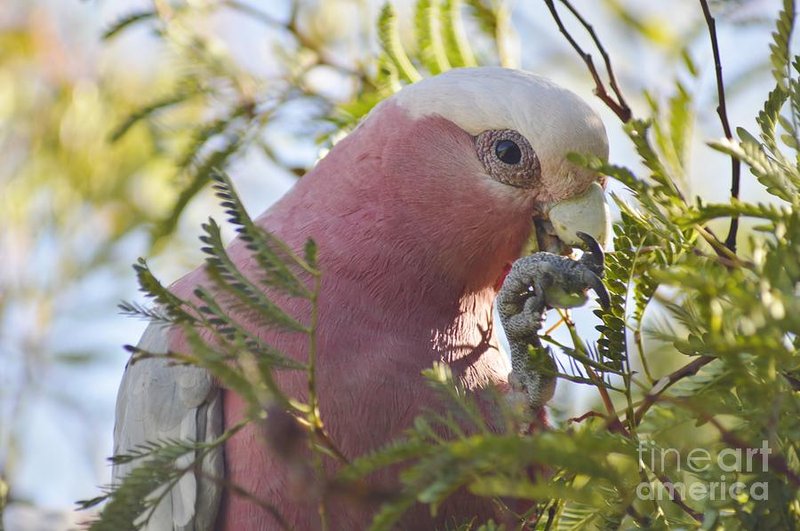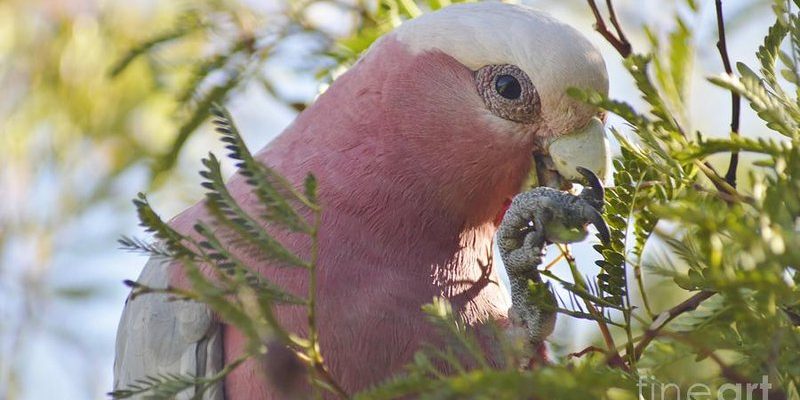
The Galah is a captivating bird, known for its striking pink and grey plumage. Imagine a charming friend who brings color to your day—this is what the Galah does for the Australian landscapes it inhabits. These social birds are often seen in flocks, filling the air with cheerful calls and playful antics. If you’ve ever spotted them in the wild, you know they can turn an ordinary day into a delightful experience.
But what exactly makes the Galah so special? These birds aren’t just pretty; they have fascinating behaviors, unique habitats, and some remarkable traits that set them apart from other cockatoos. They thrive in various environments across Australia, showing incredible adaptability and resilience. In this article, we’re diving deep into everything you need to know about the Galah—its characteristics, habits, and the little quirks that make this bird a gem in the avian world.
Physical Characteristics of the Galah
The Galah, or Eolophus roseicapilla, is often dubbed the pink cockatoo for its vibrant appearance. Let’s break down what you can expect to see when you spot one. Adult Galahs typically measure around 12 to 14 inches in length, with a wingspan reaching up to 24 inches. The males display a slightly brighter pink hue on their chest compared to the females, who have a more muted tone.
One standout feature is their crest, which can be raised or lowered depending on their mood. When they’re feeling particularly excited or alarmed, their crest stands tall and proud, resembling a colorful crown. This display adds to their charm and makes them easily recognizable. Interestingly, their beaks are strong and curved, designed to crack open nuts and seeds, their primary food sources. In fact, the Galah has a penchant for a variety of seeds, including those from grasses and acacias.
Add to that their social and playful nature, and you can see why Galahs can often be seen performing acrobatics in the trees. Watching them in flight as they swoop and glide can be a mesmerizing sight, especially when they are in groups, chattering and interacting with one another.
Habitat and Distribution
Galahs are widely distributed across Australia, thriving in open environments such as woodlands, grasslands, and even urban areas. They’re often seen in flocks near water sources, where they come to drink and socialize. One fascinating aspect of their habitat is their adaptability. While they primarily prefer arid and semi-arid regions, you can find them in various landscapes, from coastal forests to agricultural fields.
Interestingly, Galahs have also adjusted well to human developments. This means you might see them in parks and gardens, pecking at dropped seeds or foraging for food scraps. Their ability to thrive near humans is part of what makes them such a familiar sight in Australian cities. In fact, if you listen closely, you might hear their distinctive calls echoing through the streets, signaling their presence.
Galahs are not just limited to Australia; they’ve also been introduced to New Guinea and some nearby islands, expanding their range. Their presence in these areas showcases their resilience and adaptability, allowing them to flourish in diverse environments.
Diet and Feeding Habits
When it comes to food, the Galah has a varied diet that primarily consists of seeds, nuts, fruits, and sometimes even insects. They are particularly fond of seeds from grasses, including those from native Australian plants. Galahs are known to forage in large groups, often seen rummaging through fields or flocks on the ground, looking for tasty treats.
What’s interesting is the way Galahs feed. They have strong beaks designed for cracking open tough seeds and nuts. You might find them perched on tree branches, using their beaks to break apart the hard shells to access the softer insides. On occasion, they may even engage in cooperative feeding, working together to locate food sources within their community.
It’s crucial for Galahs to maintain a balanced diet to ensure their overall health. In captivity, they benefit from a diet that includes a mix of seeds, fruits, and specially formulated pellets to provide all the necessary nutrients. Similarly, those in the wild adapt their diets based on seasonal availability, showcasing their resourcefulness and adaptability.
Social Behavior and Communication
Galahs are incredibly sociable birds, often found in large flocks that can number in the hundreds. Their social dynamics are fascinating; they engage in playful behaviors, grooming each other and participating in aerial displays to strengthen their bonds. This social structure is vital for their survival, as they rely on one another for protection against predators.
Communication among Galahs is primarily vocal. They have a wide range of calls, from soft cooing sounds to loud squawks, each serving different purposes. You might hear them chatter excitedly when they find food or engage in displays of affection within their groups. Their vocal repertoire is not just limited to calls; they also use body language, such as crest movements and posturing, to express their feelings.
This kind of interaction makes watching Galahs both entertaining and educational. Each flock exhibits unique behaviors, and observing them can provide insights into their social structures. Whether they’re squabbling over a snack or dancing in the sky, their communication is a vital part of their daily lives.
Breeding Habits
When it comes to breeding, Galahs are monogamous, often forming lifelong bonds with their partners. During the breeding season, which typically occurs from late winter to early summer, they look for suitable nesting sites in tree hollows. This time is marked by elaborate courtship displays, where males impress females with their vocalizations and flight patterns.
Once a pair has chosen a nesting site, the female lays about three to five eggs, which she incubates for around 26 days. After hatching, both parents participate in feeding the chicks, bringing them a diet of soft seeds and fruits. This is a critical time for the fledglings, as they rely heavily on their parents for sustenance and protection. As they grow, the parents gradually encourage them to explore and learn the necessary skills for survival.
Watching young Galahs learn to fly and forage can be a heartwarming experience. They often wobble about as they make their first attempts at independence, a stage that is both challenging and exciting. This nurturing process cements the bonds between the family members and reinforces the community aspect of Galah life.
Conservation Status
Currently, the Galah is classified as a species of “Least Concern” by the International Union for Conservation of Nature (IUCN). Their adaptability to various environments and ability to thrive alongside human developments has contributed to their stable populations. However, like many species, they face challenges from habitat loss and climate change.
Conservation efforts are essential to keep their habitats protected, ensuring that Galahs can continue to flourish in the wild. Local initiatives often focus on habitat restoration and protection of their nesting sites, which are critical during the breeding season. Engaging the community in these efforts can help raise awareness about the importance of preserving their environments.
It is also important to ensure that these beautiful birds are not caught for the pet trade without proper regulation. Responsible ownership and local laws help ensure that Galahs can thrive both in the wild and as companions for those who appreciate their unique personalities.
Interesting Facts about the Galah
| Common Name: | Galah |
| Scientific Name: | Eolophus roseicapilla |
| Size: | 12–14 inches |
| Wingspan: | Up to 24 inches |
| Diet: | Seeds, nuts, fruits |
| Lifespan: | Up to 40 years in captivity |
| Distribution: | Australia, New Guinea |
The Galah is not just another bird; it’s a vibrant part of Australia’s natural heritage. With their playful antics, social structures, and stunning appearance, they capture the hearts of many who encounter them. Whether they’re soaring through the skies or foraging on the ground, Galahs bring joy and color to their surroundings, reminding us of the beauty of wildlife.
So next time you see a Galah, take a moment to appreciate these charming creatures. Observe their behaviors, listen to their calls, and reflect on the important role they play in their ecosystems. These delightful birds are a testament to the wonders of nature and a reminder of the importance of conservation for future generations.
FAQ
What is a Galah’s habitat like?
Galahs thrive in a variety of environments, including woodlands, grasslands, and urban areas. They are often found in flocks near water sources, where they gather to drink and socialize. Their adaptability allows them to coexist in areas altered by humans, showcasing their resilience.
Can Galahs be kept as pets?
Yes, Galahs can be kept as pets, but it’s essential to understand their needs. They require mental stimulation, social interaction, and a diet rich in seeds, fruits, and specially formulated pellets. It’s also important to ensure they have ample space to exercise and play, as they are active and social birds.
How long do Galahs live?
In captivity, Galahs can live up to 40 years or more with proper care. In the wild, their lifespan is typically shorter due to factors like predators and environmental challenges. However, their social structures help them thrive within their communities.
What do Galahs eat?
Galahs primarily eat seeds, nuts, fruits, and sometimes insects. They are particularly fond of seeds from grasses and enjoy foraging in large groups. Their strong beaks enable them to crack open tough seeds to access the nutritious parts inside.
Are Galahs good at mimicking sounds?
Galahs are known for their vocal abilities and can imitate various sounds, including human speech. While they may not be as skilled as some parrot species, their charming calls and sounds can be entertaining. With socialization and training, they can learn to mimic words and phrases.
Do Galahs have natural predators?
Yes, Galahs do have natural predators, including hawks, eagles, and snakes. Their social behavior helps protect them, as they often fly in flocks, making it difficult for predators to single them out. Their keen eyesight also aids in spotting danger from afar.
How do Galahs communicate?
Galahs communicate through a variety of vocalizations and body language. They have a range of calls, from soft coos to loud squawks, each serving different purposes like signaling alarm or excitement. Their crest movements and postures also convey emotions and intentions.
Are Galahs migratory birds?
Galahs are not strictly migratory birds; however, they may wander in search of food and water, especially during dry seasons. This movement allows them to adapt to changing environmental conditions and ensures they have access to necessary resources.
What social structures do Galahs have?
Galahs live in flocks and exhibit strong social structures. They engage in grooming behaviors, playful interactions, and cooperative feeding. This community-oriented lifestyle is vital for their survival and enhances their bonds with one another.
Can I see Galahs in urban areas?
Absolutely! Galahs have adapted well to urban environments and can often be found in parks, gardens, and even residential areas. Their ability to thrive alongside humans has made them a common sight in many Australian cities.
How do Galahs care for their young?
Both parents participate in caring for their chicks. After the eggs hatch, they feed the young with soft seeds and fruits, teaching them essential skills for survival. This shared parenting helps strengthen family bonds and aids in the chicks’ development.
What should I know before getting a Galah as a pet?
Before getting a Galah as a pet, consider their social needs, dietary requirements, and space for exercise. They thrive on interaction, so having another bird or plenty of human companionship is crucial. Proper care and commitment can lead to a rewarding relationship with these charming birds.

